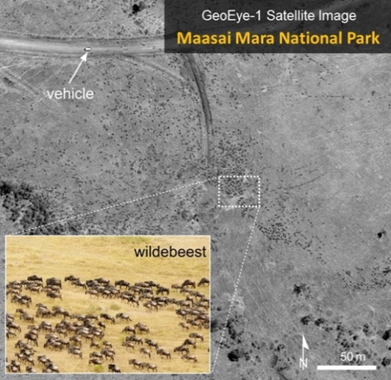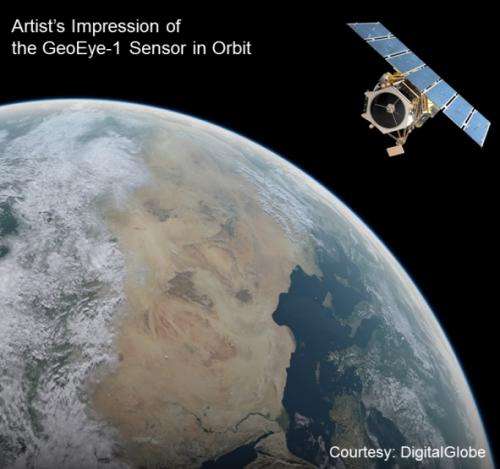Animal populations counted using satellites for the first time

Thanks to satellite images with very high resolution, it is now possible to perform fairly accurate counts of animal populations. Researchers at the University of Twente demonstrated this in the open savannah of the Masai Mara national park in Kenya. The results of their research were published in the renowned PLoS ONE scientific journal.
Knowing the size of populations of wild animals is of vital importance for the management and conservation of those animals. Traditional methods, such as ground or aerial photographic surveys , often disturb the animals , as well as being labour intensive and expensive. Counting animals using satellite images would seem to be a logical alternative, but is not quite so simple. This is partly because clouds and vegetation can hide the animals. Determining which pixels on an image are actually animals can also be quite a complicated matter. Despite these difficulties, Dr Zheng Yang was successful while carrying out research at the University of Twente. According to Dr Tiejun Wang, Yang's supervisor, this research shows for the first time that it is possible to obtain a fairly accurate and immediate count of animals across large, open territories using the latest generation of satellite images. "This is made possible due to the high resolution of the images, faster computer processing and image analysis, and a significant improvement in the algorithms used."
Yang and his colleagues developed a classification system for high-resolution satellite images that identifies pixels on the images that could correspond with animals. The researchers then use image analysis techniques to determine which pixels do in fact show animals and which do not. "The counts performed using our new method differed from the counts made manually by an average of 8.2%," says Wang. "Further research is needed in order to make counts. even more accurate. Our method is not yet able to distinguish the different species of animals either, so this will also require further research. But we are very pleased with these initial results. Our method has proven to be a useful instrument and is much cheaper and less labour intensive than traditional methods."

More information: Yang Z, Wang T, Skidmore AK, de Leeuw J, Said MY, et al. (2014) "Spotting East African Mammals in Open Savannah from Space." PLoS ONE 9(12): e115989. DOI: 10.1371/journal.pone.0115989
Journal information: PLoS ONE
Provided by University of Twente
















